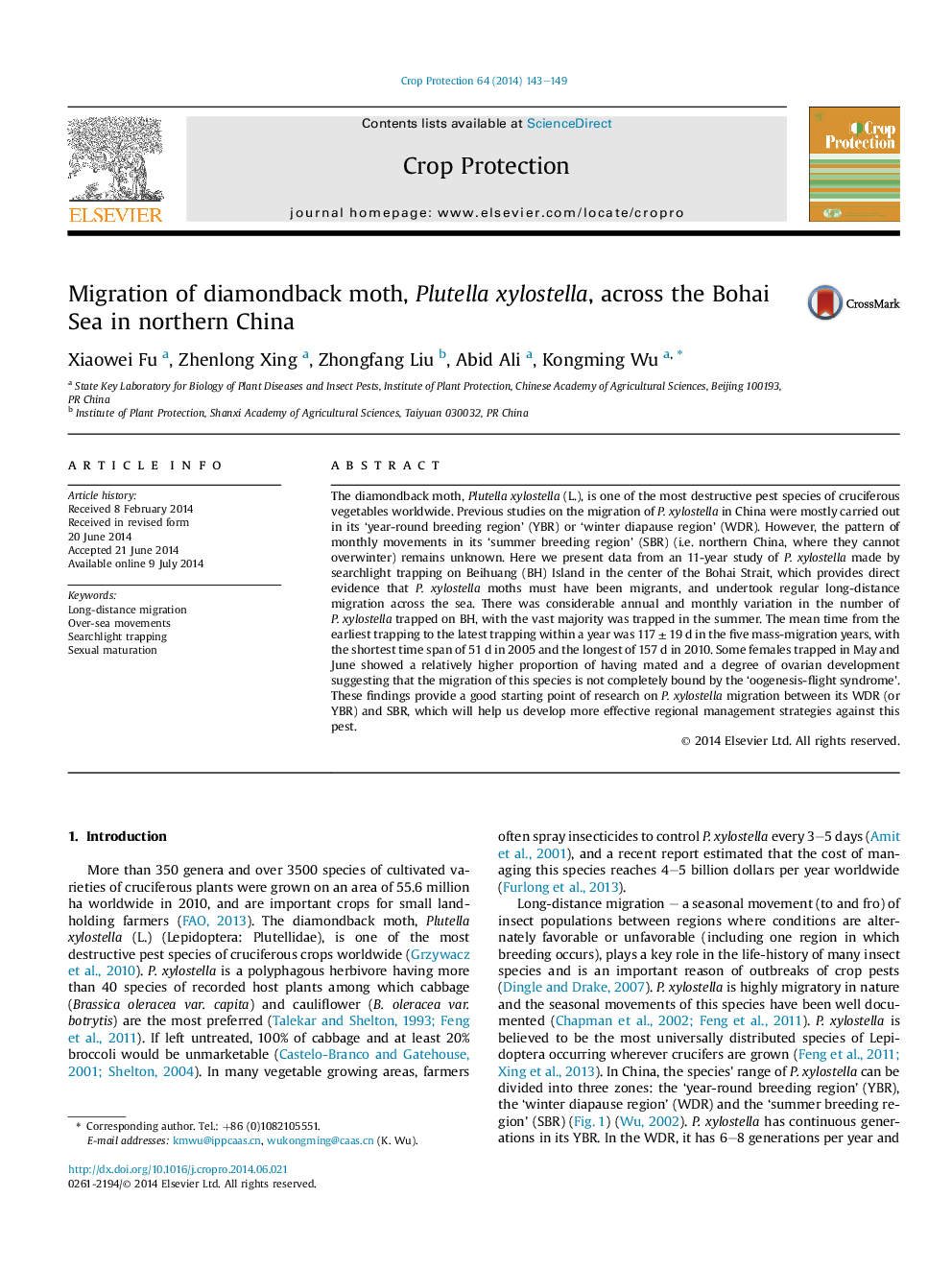| Article ID | Journal | Published Year | Pages | File Type |
|---|---|---|---|---|
| 6373669 | Crop Protection | 2014 | 7 Pages |
â¢Plutella xylostella regularly migration across the Bohai Sea into northeastern China to take advantage abundant food resources there.â¢The strength of the over-sea migration varied annually and monthly.â¢The spring migrants were sexually mature individuals with higher mating rate and well developed ovarian.â¢The migration of P. xylostella is not completely bound by the 'oogenesis-flight syndrome'.
The diamondback moth, Plutella xylostella (L.), is one of the most destructive pest species of cruciferous vegetables worldwide. Previous studies on the migration of P. xylostella in China were mostly carried out in its 'year-round breeding region' (YBR) or 'winter diapause region' (WDR). However, the pattern of monthly movements in its 'summer breeding region' (SBR) (i.e. northern China, where they cannot overwinter) remains unknown. Here we present data from an 11-year study of P. xylostella made by searchlight trapping on Beihuang (BH) Island in the center of the Bohai Strait, which provides direct evidence that P. xylostella moths must have been migrants, and undertook regular long-distance migration across the sea. There was considerable annual and monthly variation in the number of P. xylostella trapped on BH, with the vast majority was trapped in the summer. The mean time from the earliest trapping to the latest trapping within a year was 117 ± 19 d in the five mass-migration years, with the shortest time span of 51 d in 2005 and the longest of 157 d in 2010. Some females trapped in May and June showed a relatively higher proportion of having mated and a degree of ovarian development suggesting that the migration of this species is not completely bound by the 'oogenesis-flight syndrome'. These findings provide a good starting point of research on P. xylostella migration between its WDR (or YBR) and SBR, which will help us develop more effective regional management strategies against this pest.
